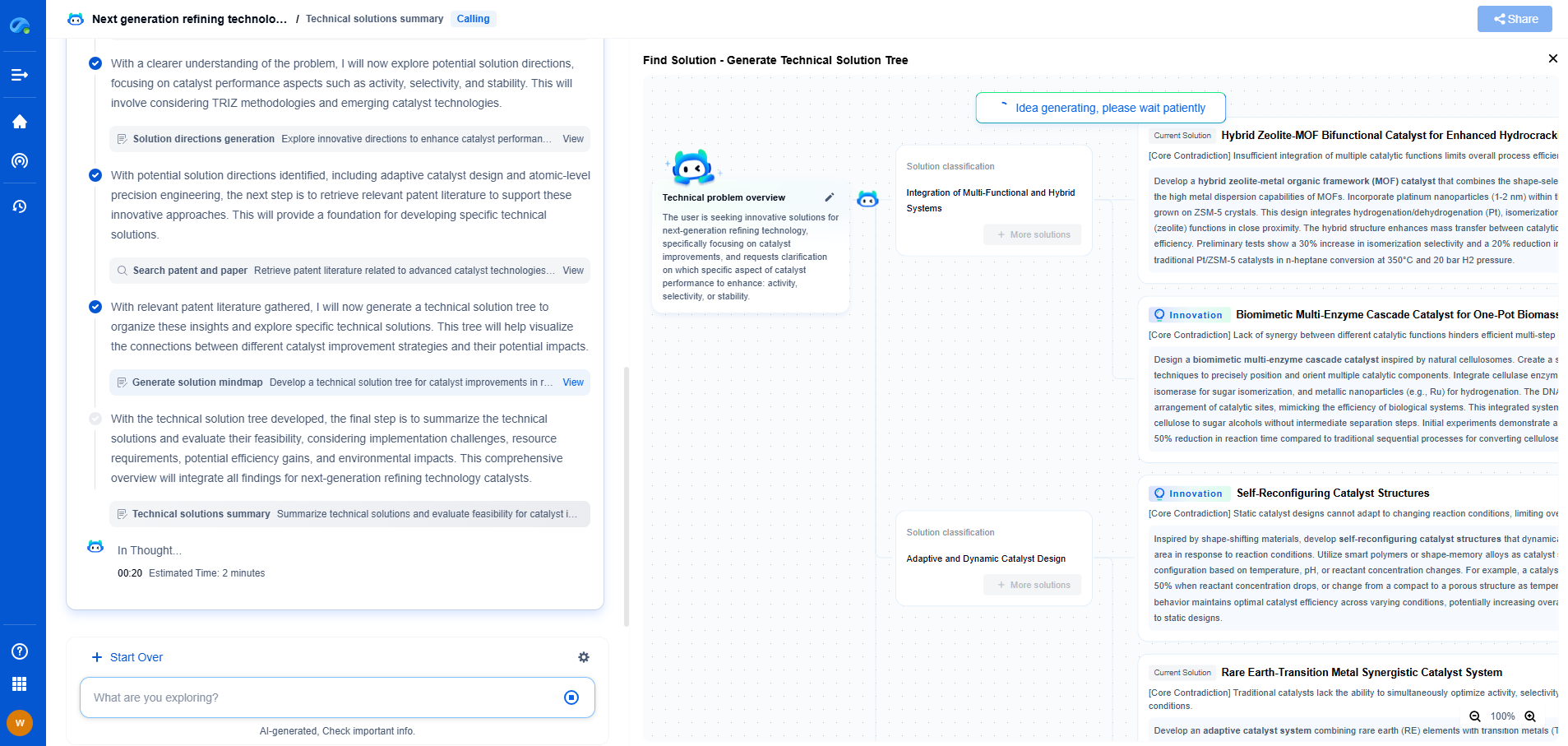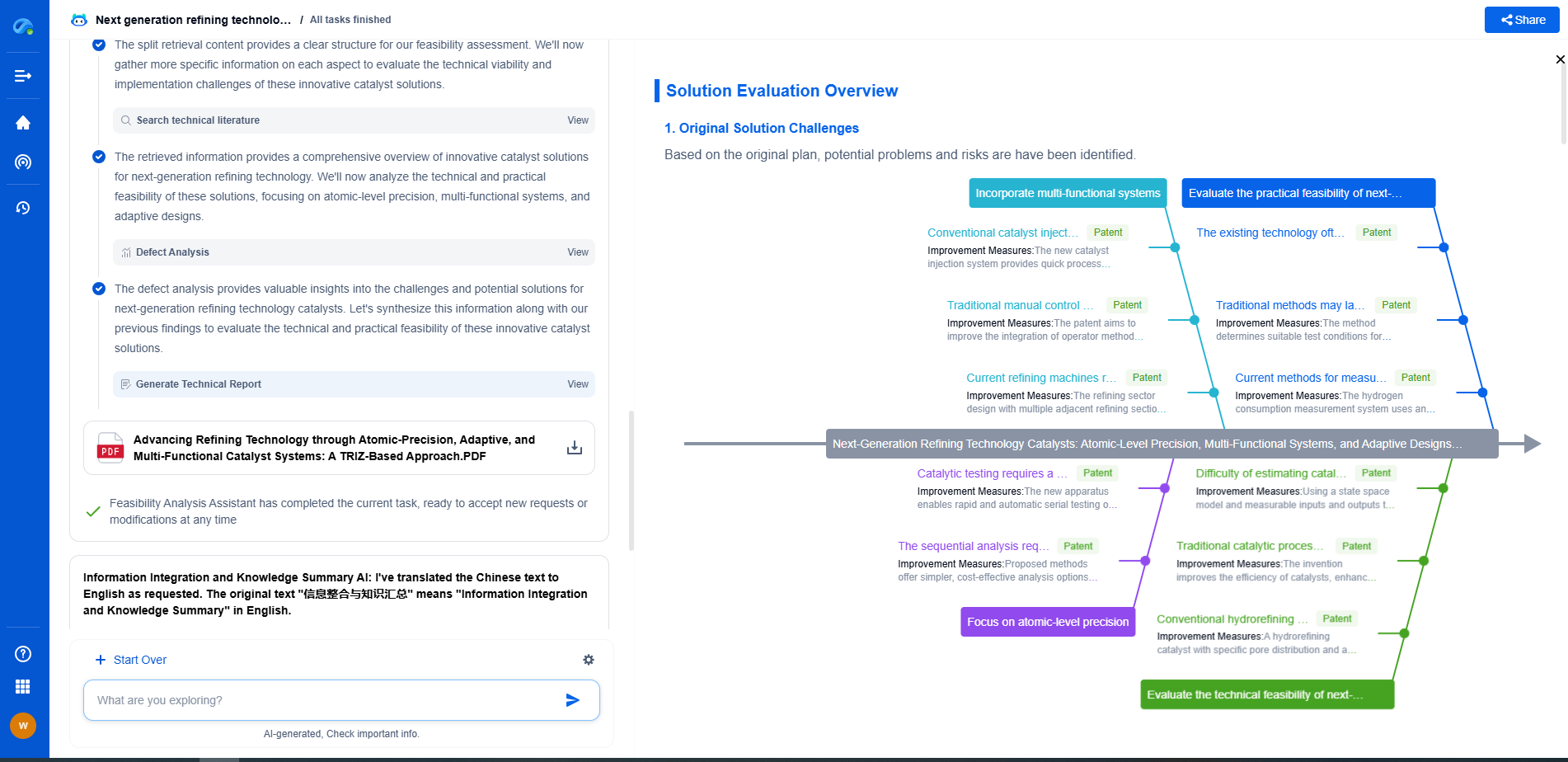What Is Harmonic Distortion in Acoustic and Vibration Systems?
JUL 16, 2025 |
Harmonic distortion is a phenomenon that occurs when the output signal of an acoustic or vibration system deviates from the input signal, not just in amplitude or phase but in the generation of additional frequencies. These additional frequencies are harmonics or overtones, which are whole-number multiples of the fundamental frequency. Harmonic distortion is a critical factor in the fidelity and accuracy of acoustic and vibration systems, impacting everything from sound quality in audio equipment to the precision of measurements in engineering applications.
Causes of Harmonic Distortion
Harmonic distortion can arise from several sources. In electronic systems, nonlinear components such as amplifiers, transformers, and transducers can introduce harmonic distortion. When these components are driven beyond their linear operating range, they produce output signals that contain harmonics. Mechanical systems, on the other hand, may encounter harmonic distortion due to material properties, structural anomalies, or interaction with other components. For example, a speaker cone that does not move perfectly in response to the electrical signal can create harmonic distortion.
Types of Harmonic Distortion
There are different types of harmonic distortion, primarily classified based on how they manifest in a system. Total Harmonic Distortion (THD) is the most commonly discussed, representing the ratio of the sum of the powers of all harmonic frequencies to the power of the fundamental frequency. THD is typically expressed as a percentage, with lower percentages indicating less distortion and thus higher fidelity.
In addition to THD, Intermodulation Distortion (IMD) is another type that occurs when two or more frequencies interact to create additional unwanted frequencies. Unlike THD, which involves harmonics of a single frequency, IMD results in new frequencies that are not harmonics of the original frequencies, often leading to more noticeable and unpleasant distortions.
Impact of Harmonic Distortion on Systems
Harmonic distortion can significantly affect the performance and quality of acoustic and vibration systems. In audio systems, high levels of THD can result in a loss of clarity and detail, impacting the listening experience. Musical notes may sound harsh or muddy, and subtle nuances might be lost. In vibration analysis, harmonic distortion can lead to incorrect readings or misinterpretations of the data, potentially affecting diagnostics and predictive maintenance.
In some applications, however, a certain level of harmonic distortion is acceptable or even desirable. For example, guitar amplifiers often intentionally introduce distortion to produce a richer, more textured sound. The key is in controlling the distortion to achieve the desired effect without compromising the integrity of the system's performance.
Mitigating Harmonic Distortion
Mitigating harmonic distortion involves a combination of design, component selection, and careful system calibration. In electronic systems, choosing high-quality components with wide linear operating ranges can help reduce distortion. Additionally, employing feedback mechanisms within circuits can stabilize performance and minimize nonlinearities.
In mechanical systems, ensuring precise manufacturing and assembly can limit physical sources of distortion. Regular maintenance and calibration can also help keep systems operating within their optimal range, reducing the likelihood of distortion.
Advanced techniques such as digital signal processing (DSP) can further mitigate harmonic distortion by using algorithms to detect and cancel out unwanted harmonics. These solutions are particularly useful in audio processing and communication technologies, where maintaining signal integrity is paramount.
Conclusion
Harmonic distortion is an inherent challenge in acoustic and vibration systems, impacting both signal quality and system performance. By understanding its causes, types, and effects, engineers and designers can better manage and mitigate its impact. Through careful system design, component selection, and the use of advanced technologies, harmonic distortion can be controlled to achieve the desired balance of fidelity and performance. Whether in high-fidelity audio reproduction or precise vibration analysis, addressing harmonic distortion is crucial for ensuring accurate and high-quality outcomes.
In the world of vibration damping, structural health monitoring, and acoustic noise suppression, staying ahead requires more than intuition—it demands constant awareness of material innovations, sensor architectures, and IP trends across mechanical, automotive, aerospace, and building acoustics.
Patsnap Eureka, our intelligent AI assistant built for R&D professionals in high-tech sectors, empowers you with real-time expert-level analysis, technology roadmap exploration, and strategic mapping of core patents—all within a seamless, user-friendly interface.
⚙️ Bring Eureka into your vibration intelligence workflow—and reduce guesswork in your R&D pipeline. Start your free experience today.
- R&D
- Intellectual Property
- Life Sciences
- Materials
- Tech Scout
- Unparalleled Data Quality
- Higher Quality Content
- 60% Fewer Hallucinations
Browse by: Latest US Patents, China's latest patents, Technical Efficacy Thesaurus, Application Domain, Technology Topic, Popular Technical Reports.
© 2025 PatSnap. All rights reserved.Legal|Privacy policy|Modern Slavery Act Transparency Statement|Sitemap|About US| Contact US: help@patsnap.com

